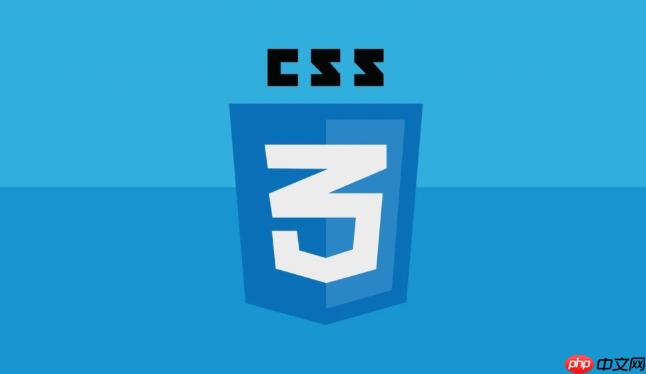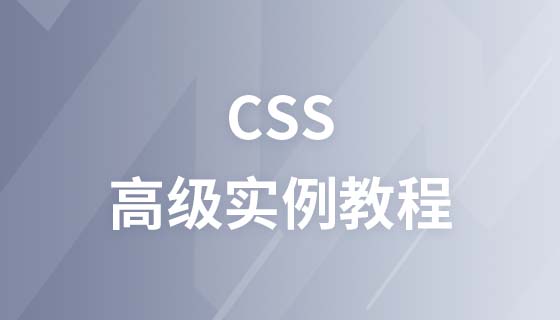固定CSS表格标题的核心是让表头在滚动时保持可见,提升用户体验。主要方案有两种:一是使用 position: sticky,通过设置 top: 0 实现表头粘滞效果,优点是代码简洁、语义清晰,适用于现代浏览器,但受限于父级 overflow 属性且兼容性较差(如IE不支持);二是采用分离结构的 overflow + display: block 方案,将 <thead> 和 <tbody> 分别包裹在不同容器中,仅对表体设置 overflow-y: auto 以实现内容滚动而表头固定,兼容性好但需手动同步列宽,通常配合 table-layout: fixed 或JavaScript处理。实际应用中常见问题包括列宽错位、滚动条占位导致对不齐、sticky失效于overflow容器、动态数据更新后布局错乱以及性能瓶颈等。为保证可访问性和响应式表现,还需注意语义化结构、横向滚动适配及虚拟滚动优化。综合来看,现代项目推荐优先使用 position: sticky,老旧或复杂场景则选用结构分离方案并辅以JS增强。

固定CSS表格标题,核心思路是让表头在表格内容滚动时保持不动。这通常需要结合HTML结构、CSS样式,有时甚至会用到一点JavaScript来处理更复杂的场景或兼容性问题。最常见的做法是利用CSS的
position: sticky
overflow-y: scroll
CSS表格标题固定,这事儿说起来简单,真要做好,尤其是兼顾兼容性和用户体验,还真得花点心思。我个人在做一些数据密集型后台项目时,表格标题固定几乎是标配,否则用户翻看长列表时,根本不知道每列数据代表什么,体验非常糟糕。
要实现CSS表格标题固定,我们通常会考虑以下两种主要方案:
方案一:使用 position: sticky
立即学习“前端免费学习笔记(深入)”;
这是最简洁、语义化最好的方法。它让元素在达到某个滚动阈值时表现得像
position: fixed
position: static
position: relative
<div class="table-wrapper">
<table>
<thead>
<tr>
<th>列标题 1</th>
<th>列标题 2</th>
<th>列标题 3</th>
<!-- 更多列标题 -->
</tr>
</thead>
<tbody>
<tr>
<td>数据 1-1</td>
<td>数据 1-2</td>
<td>数据 1-3</td>
</tr>
<!-- 更多行数据 -->
</tbody>
</table>
</div>.table-wrapper {
height: 300px; /* 或者一个max-height */
overflow-y: auto; /* 确保内容可以滚动 */
position: relative; /* 为sticky提供一个定位上下文,尽管不是必须的,但有时可以避免一些奇怪的行为 */
}
.table-wrapper thead th {
position: sticky;
top: 0; /* 当滚动到顶部时,表头会“粘”在那里 */
background-color: #f8f8f8; /* 确保表头背景色,避免内容透过 */
z-index: 10; /* 确保表头在内容之上 */
}
/* 确保表格宽度正常,避免sticky元素脱离流后导致列宽错乱 */
.table-wrapper table {
width: 100%;
border-collapse: collapse;
}
.table-wrapper th, .table-wrapper td {
padding: 8px;
border: 1px solid #ddd;
text-align: left;
}方案二:结合 display: block
overflow
这种方法适用于需要兼容老旧浏览器,或者
position: sticky
overflow: hidden
<thead>
<tbody>
<div class="table-container">
<div class="table-header">
<table>
<thead>
<tr>
<th>列标题 1</th>
<th>列标题 2</th>
<th>列标题 3</th>
</tr>
</thead>
</table>
</div>
<div class="table-body">
<table>
<tbody>
<tr>
<td>数据 1-1</td>
<td>数据 1-2</td>
<td>数据 1-3</td>
</tr>
<!-- 更多行数据 -->
</tbody>
</table>
</div>
</div>.table-container {
max-height: 300px; /* 整个表格容器的最大高度 */
border: 1px solid #ddd; /* 整体边框 */
}
.table-header table, .table-body table {
width: 100%;
border-collapse: collapse;
}
.table-header th, .table-body td {
padding: 8px;
border: 1px solid #ddd;
text-align: left;
}
.table-header {
/* 表头部分 */
background-color: #f8f8f8;
/* border-bottom: none; /* 避免双重边框 */
}
.table-body {
max-height: calc(300px - 40px); /* 假设表头高度40px,需要计算剩余高度 */
overflow-y: auto; /* 只有表格内容滚动 */
}
/* 关键:同步列宽,这通常是最麻烦的部分 */
/* 需要手动设置或用JS动态计算 */
.table-header th:nth-child(1),
.table-body td:nth-child(1) {
width: 33%; /* 示例,实际需要根据内容调整 */
}
/* 对每个列都进行设置 */position: sticky
<th>
position: sticky
top: 0
但它也不是万能的。最大的局限性,我觉得主要体现在几个方面:
首先是兼容性,虽然现在主流浏览器支持度已经很好了(IE嘛,大家都懂,基本不考虑了),但在一些旧版浏览器或特定环境下,可能还是需要一些前缀或者回退方案。
其次,也是更常见的问题,是它对父级 overflow
<th>
<table>
<tbody>
overflow: hidden
overflow: scroll
overflow: auto
position: sticky
overflow
再者,如果你的表格结构比较复杂,比如有合并单元格(
rowspan
colspan
position: sticky
最后,当表格内容需要横向滚动时,
position: sticky
position: sticky
overflow
display: block
当我们谈到
position: sticky
overflow
display: block
这套方案的核心思想,其实就是把表格的头部(<thead>
<tbody>
最常见的做法是:
overflow-y: auto
scroll
<thead>
<tbody>
div
<thead>
div
<tbody>
div
max-height
overflow-y: auto
我一般会这样来组织HTML和CSS:
<div class="fixed-header-table-wrapper">
<div class="fixed-header-table-header">
<table>
<thead>
<tr>
<th style="width: 100px;">ID</th>
<th style="width: 200px;">姓名</th>
<th style="width: 150px;">年龄</th>
<th style="width: 300px;">地址</th>
<th style="width: 120px;">操作</th>
</tr>
</thead>
</table>
</div>
<div class="fixed-header-table-body">
<table>
<tbody>
<!-- 假设这里有大量数据行 -->
<tr>
<td style="width: 100px;">001</td>
<td style="width: 200px;">张三</td>
<td style="width: 150px;">28</td>
<td style="width: 300px;">某某省某某市某某区某某街道123号</td>
<td style="width: 120px;"><button>编辑</button></td>
</tr>
<tr>
<td style="width: 100px;">002</td>
<td style="width: 200px;">李四</td>
<td style="width: 150px;">35</td>
<td style="width: 300px;">某某省某某市某某区某某街道456号</td>
<td style="width: 120px;"><button>编辑</button></td>
</tr>
<!-- ... 更多行 ... -->
</tbody>
</table>
</div>
</div>.fixed-header-table-wrapper {
width: 100%;
max-width: 900px; /* 示例宽度 */
border: 1px solid #e0e0e0;
/* 重要的是,这里不设置overflow-y,而是交给内部的body div */
}
.fixed-header-table-header,
.fixed-header-table-body {
width: 100%;
overflow-x: auto; /* 如果表格内容可能横向溢出,这里设置 */
}
.fixed-header-table-header table,
.fixed-header-table-body table {
width: 100%; /* 确保表格宽度填充父容器 */
border-collapse: collapse;
table-layout: fixed; /* 关键!让列宽由th/td的width属性控制 */
}
.fixed-header-table-header thead th,
.fixed-header-table-body tbody td {
padding: 10px 15px;
border: 1px solid #e0e0e0;
text-align: left;
white-space: nowrap; /* 防止内容换行,影响列宽 */
box-sizing: border-box; /* 确保padding不影响width计算 */
}
.fixed-header-table-header {
background-color: #f5f5f5;
font-weight: bold;
/* 确保表头和表体之间的边框处理得当,避免重复或缺失 */
border-bottom: none;
}
.fixed-header-table-body {
max-height: 300px; /* 设置表体最大高度,让它内部滚动 */
overflow-y: scroll; /* 只有表体内容滚动 */
/* 如果有横向滚动条,需要计算高度,或者用JS动态调整 */
}
/* 列宽同步是这个方案的痛点,需要手动或JS来确保表头和表体列宽一致 */
/* 上面的HTML中我直接在th/td上写了width,这是最直接的办法 */
/* 也可以通过CSS选择器精确控制: */
/* .fixed-header-table-header th:nth-child(1),
.fixed-header-table-body td:nth-child(1) { width: 100px; } */这个方案最麻烦的地方在于列宽的同步。由于
<thead>
<tbody>
<table>
table-layout: fixed
th
td
width
在实际项目里,固定表格标题这事儿,看起来小,但坑是真的不少。我个人就踩过好几个,每次都得花点时间去调试,去琢磨。
一个最常见的,也是最让人头疼的,就是列宽不同步的问题。尤其是在使用
overflow
display: block
<thead>
<tbody>
<table>
th
td
width
table-layout
fixed
<tbody>
<td>
<thead>
<th>
另一个坑是滚动条的影响。当
<tbody>
calc()
position: sticky
overflow
sticky
overflow: hidden
scroll
sticky
还有就是表格内容的动态变化。如果表格数据是异步加载的,或者用户可以增删列,那么列宽的计算和固定表头的调整就变得更加复杂。这时,单纯的CSS方案可能就不够用了,必须引入JavaScript来监听DOM变化,或者在数据更新后重新计算和应用样式。
性能问题在处理特别大的表格时也会浮现。如果表格有成千上万行数据,即使表头固定了,渲染和滚动依然可能卡顿。这时,可能需要考虑虚拟滚动(Virtual Scrolling)的技术,只渲染当前视口可见的数据行,但这已经超出了CSS固定表头的范畴了。
最后,无障碍性(Accessibility)也值得关注。虽然固定了表头,方便了视觉用户,但对于使用屏幕阅读器的用户来说,确保他们仍然能够正确理解表格结构和数据关联性也很重要。通常,只要HTML结构是语义化的,这方面问题不大,但如果过度拆分表格,可能会带来一些挑战。
总而言之,固定表格标题并非一蹴而就,它需要你对HTML结构、CSS布局以及可能的JavaScript交互都有深入的理解。没有银弹,只有根据具体项目需求和兼容性要求,选择最合适的方案,并细致地处理各种边缘情况。
以上就是CSS表格标题怎么固定_CSS表格标题固定步骤解析的详细内容,更多请关注php中文网其它相关文章!

每个人都需要一台速度更快、更稳定的 PC。随着时间的推移,垃圾文件、旧注册表数据和不必要的后台进程会占用资源并降低性能。幸运的是,许多工具可以让 Windows 保持平稳运行。




Copyright 2014-2025 https://www.php.cn/ All Rights Reserved | php.cn | 湘ICP备2023035733号